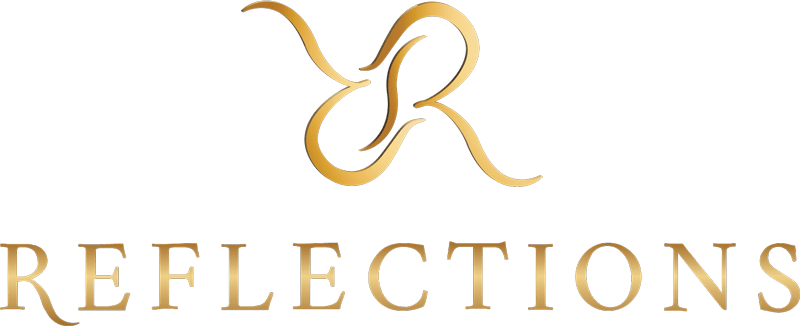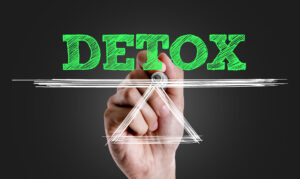In communities across the country, the devastating impact of methamphetamines continues to grow, affecting families and safety. But would you recognize meth if you saw it?
What do methamphetamines look like? Methamphetamines may present as innocent-looking crystals that could easily be mistaken for harmless shards of broken glass or as a fine, white powder that might pass as sugar at a glance.
This guide demystifies the visual cues of methamphetamines to provide crucial knowledge needed to identify these substances. Read on to uncover the subtle signs and characteristics of meth that are essential for protecting yourself and your community.
What Do Methamphetamines Look Like?
Methamphetamines, often known simply as meth, can take various forms. These differences can make meth identification challenging. Understanding the general appearance of methamphetamines can help you recognize them and prevent potential harm.
Crystal Meth Appearance
One of the most recognizable forms of meth is crystal meth, often referred to as “ice” or “glass.” Crystal meth typically appears as clear or bluish-white crystals. These crystals can resemble shards of glass or chunks of rock salt.
Crystal meth is usually smoked, but it can also be snorted, swallowed, or injected. The high purity of crystal meth gives it its distinctive appearance which makes it one of the most potent and dangerous forms of meth.
Powder Meth
Another common form of meth is powder methamphetamine. This version looks similar to a fine, white powder. However, it can sometimes appear off-white or yellowish, depending on the chemicals used in its production.
Powder meth is often snorted or dissolved in liquid for injection. It can be mistaken for other substances, such as cocaine or crushed prescription drugs which is why it’s critical to know the specific signs of meth use.
Pills and Tablets
Methamphetamines can also be found in pill or tablet form. These pills can vary in color, size, and shape. They might be mistaken for legitimate medications, such as Adderall, which is used to treat ADHD.
Meth pills are often stamped with logos or designs to mimic prescription medications which makes meth identification more complex. Users may swallow or crush and snort these pills to achieve their high.
Colors and Shapes of Methamphetamines
Methamphetamines can come in various colors and shapes, further complicating their identification. The colors and shapes often depend on the manufacturing process and the chemicals used.
Common Colors
The most common color of meth is clear or white, especially in its crystal form. However, meth can also appear in several other colors, including blue, pink, yellow, and brown. These color variations are typically due to impurities or the presence of additives.
For example, pink or blue-tinted meth may be marketed as more potent or pure, but these claims are often misleading.
Uncommon Colors
While less common, meth can sometimes appear in unusual colors like red, green, or even black. These colors are usually the result of the specific chemicals and dyes used during production. For example, red meth, sometimes called “strawberry quick,” is often marketed to younger users.
Despite its colorful appearance, all forms of meth are equally dangerous and addictive.
Shapes and Sizes
Methamphetamines can come in different shapes and sizes. Crystal meth usually appears as larger, glass-like shards or smaller crystalline pieces. Powder meth is typically a fine, loose substance.
In pill form, meth can be round, oval, or shaped to resemble prescription drugs. These pills can be small and easy to conceal, making them particularly dangerous. Methamphetamine tablets might also be found in capsules, which can be opened and the contents snorted or dissolved for injection.
Packaging and Paraphernalia
Identifying methamphetamines involves recognizing not only the substance itself but also the packaging and paraphernalia associated with its use. Meth users and dealers often utilize specific packaging methods and tools.
Typical Packaging
Meth is frequently sold in small plastic bags, often referred to as “baggies.” These bags can be tiny, typically containing a gram or less of the substance. Meth might also be packaged in small pieces of aluminum foil or paper folds.
These methods make it easy to distribute and conceal the drug. Sometimes, larger quantities are packaged in vacuum-sealed bags to prevent detection and maintain freshness.
Paraphernalia
Recognizing meth paraphernalia is a crucial part of meth identification. Common items include glass pipes, which are used to smoke crystal meth. These pipes often have a bulbous end where the meth is heated.
You might also find small spoons or scoops used to measure and handle the drug. Straws or rolled-up bills are commonly used for snorting meth, while syringes indicate injection use.
Home-made Devices
In some cases, users create improvised devices to consume meth. For example, a light bulb can be turned into a makeshift pipe, or a soda can might be modified for smoking. These homemade devices can be a clear indicator of meth use when found.
The presence of burnt aluminum foil or charred spoons can also signal methamphetamine use.
Identifying Methamphetamines in Different Settings
Recognizing methamphetamines in various settings can be challenging. Knowing what to look for can help you spot signs of meth use and prevent potential dangers.
At Home
In a household setting, you might find several clues indicating the presence of methamphetamines. Small plastic baggies, aluminum foil, or hollowed-out light bulbs can be signs of meth use. Burnt spoons, straws, and syringes are also common paraphernalia associated with meth consumption.
Strange chemical smells, similar to ammonia or cat urine, can be another indicator of meth production or use. If you notice any of these items or smells, it’s crucial to exercise caution and consider the possibility of meth in the home.
In Public
Detecting meth abuse in public places involves being observant of both the people and the environment. Individuals using meth might exhibit extreme weight loss, skin sores, and dental issues.
Behavioral signs include increased agitation, paranoia, and erratic actions. They might also have burns on their lips or fingers from smoking meth.
In public areas like parks or restrooms, you might find discarded syringes, broken glass pipes, or small baggies. Public places can also be hotspots for drug transactions, so unusual gatherings or exchanges might indicate meth activity.
Digital Clues
The internet has made it easier for individuals to buy and sell methamphetamines. Online marketplaces and social media platforms are often used for these transactions.
Digital clues can include coded language in messages, such as “crystal” or “ice,” and the use of emojis to represent drugs. Websites might offer substances using discreet terms, and transactions are often arranged through encrypted messaging apps.
Effects on Appearance and Behavior
Methamphetamines cause significant changes in both appearance and behavior. This makes it possible to identify users through these symptoms.
Physical Changes
One of the most noticeable methamphetamine symptoms is extreme weight loss. Users often experience a drastic reduction in appetite which can lead to significant weight loss.
Skin sores are another common sign, as users may scratch or pick at their skin due to the sensation of bugs crawling under it, a condition known as formication.
Dental issues, often referred to as “meth mouth,” are prevalent among users. This condition includes severe tooth decay, gum disease, and tooth loss, caused by the acidic nature of the drug, poor oral hygiene, and dry mouth.
Behavioral Signs
Behavioral changes in meth users are also quite distinct. Increased agitation and hyperactivity are common, as meth is a powerful stimulant. Users may seem unusually energetic, talkative, or restless.
Paranoia and hallucinations can also occur, leading to erratic or dangerous behavior. Meth users might display obsessive behaviors, such as cleaning or disassembling objects repeatedly.
These behaviors, combined with the physical symptoms, create a clear picture of meth abuse.
Safety Precautions and What to Do if You Encounter Meth
Encountering methamphetamines can be a dangerous situation. Knowing how to handle it safely is crucial.
Personal Safety Tips
If you come across meth or meth paraphernalia, do not touch it. Methamphetamines can be harmful through skin contact, and the paraphernalia might be contaminated. Ensure you keep a safe distance and avoid inhaling any fumes.
If you suspect meth production, leave the area immediately, as the chemicals used can be highly toxic and explosive.
Reporting
When you find methamphetamines or suspect meth activity, report it to local authorities. Contact your local police department or use anonymous tip lines if you feel uncomfortable reporting directly. Providing detailed information, such as the location and any observed activities, can help authorities address the issue effectively.
Reporting suspected meth activity not only protects you but also helps keep your community safe.
Stay Informed and Stay Protected
What do methamphetamines look like? They can masquerade in many forms, from crystalline structures to disguised tablets.
Recognizing these can mean the difference between safety and danger. This guide has provided insights into identifying methamphetamines in various settings, understanding their physical effects, and the necessary precautions for handling discoveries.
At Reflections, we understand the complexities of substance dependence and offer tailored treatment plans that address not only the addiction but also the underlying psychological factors. If you or someone you know is struggling with addiction, contact us for a compassionate approach to recovery in a serene environment.








